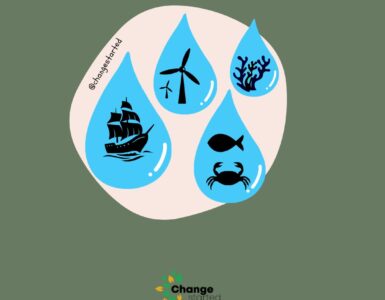Given the global environmental challenges that the world faces like climate change, biodiversity loss, pollution and waste, there is a need for a high level of international cooperation.
These challenges are not just concentrated in a particular region, country or geography, instead, most environmental issues are transboundary as they percolate from one area to another.
What are Multilateral Environmental Agreements (MEAs)?

Multilateral Environmental Agreements are international agreements intended to promote cooperation and participation of multiple countries to address the causes and consequences of global environmental issues.
The members of these MEAs negotiate and agree upon certain rules and frameworks on which each country is responsible for implementing the agreement at the national level. In most cases, these Multilateral Environmental Agreements are open to countries or member states from across the world, unless the agreement is defined for a specific purpose or a region.
Since the formation of the United Nations in 1945, countries have worked together to form multiple agreements to safeguard various aspects of the environment. These agreements are expressed in written form in a document that is generally approved by the member country’s parliament (or similar).
The United Nations Environment Programme (UNEP), formed in 1972, has been entrusted by the governing bodies of numerous Multilateral Environmental Agreements to serve as the designated entity for providing essential secretariat functions to these conventions. UNEP is responsible for coordinating responses to environmental issues within the United Nations system ensuring the effective functioning and implementation of international agreements.
One of the great success stories of a Multilateral Environmental Agreements is the Montreal Protocol, signed in 1987. Many countries around the world got together to avert a major environmental disaster that was about to strike our planet.
Different Global Conventions on Environmental Issues
Here is a quick summary of different environmental conventions and international cooperation agreements that address issues on nature, climate change, biodiversity and environmental degradation.
Ramsar Convention on Wetlands of International Importance Especially as Waterfowl Habitat (1971)
The Convention focuses on the conservation and sustainable management of wetlands. Identifies and designates wetlands of international importance as Ramsar Sites.
Convention on International Trade in Endangered Species of Wild Fauna and Flora (CITES) (1973)
CITES strives to prevent the international trade of wild animals and plants from endangering their survival in the wild. It provides protection to over 35,000 species of animals and plants.
Convention on the Conservation of Migratory Species (CMS) of Wild Animals (1979)
Popularly known as the Convention on Migratory Species or the Bonn Convention is dedicated to conserving migratory species across their entire ranges. Given India’s location within the Central Asian Flyway, this convention holds significant importance for the country.
Basel Convention on the Control of Transboundary Movements of Hazardous Wastes and their Disposal (1989)
Popularly known as the Basel Convention aims to protect human health and the environment against the adverse effects resulting from the generation, management, transboundary movements and disposal of hazardous and other wastes.
UN Convention on Biological Diversity (1992)
The UN Convention on Biological Diversity (CBD) addresses biodiversity comprehensively, covering wildlife and domestic biodiversity. It focuses on three key objectives related to conservation, sustainable resource use, and access and benefit sharing arising due to the use of biological resources.
UN Framework Convention on Climate Change (UNFCCC) (1992)
This international treaty addresses challenges stemming from climate change, which are closely linked with biodiversity objectives and Sustainable Development Goals (SDGs). It focuses on both mitigating climate change and adapting to its impacts.
United Nations Convention to Combat Desertification (UNCDD) (1994)
The UNCCD strives to combat desertification and alleviate drought impacts by implementing national action programmes.
The Kyoto Protocol (1997)
The Kyoto Protocol translates the objectives of the UNFCCC into action by requiring industrialized nations and transitioning economies to curb and reduce greenhouse gas (GHG) emissions based on specific targets. While the UNFCCC mandates these countries to adopt mitigation policies and report regularly, the Protocol holds them accountable for enforcing actual emission reduction measures.
The Cartagena Protocol on Biosafety to the Convention on Biological Diversity (2000)
This Protocol seeks to guarantee the safe handling, transportation, and utilization of living-modified organisms (LMOs) produced through modern biotechnology, which could potentially pose risks to biological diversity and human health.
International Treaty on Plant Genetic Resources for Food and Agriculture (2001)
Aligned with the Convention on Biological Diversity, this treaty focuses on ensuring food security by conserving, exchanging, and sustainably utilizing global plant genetic resources for agriculture. It also highlights fair and equitable benefit sharing and recognizes farmers’ rights.
The Nagoya Protocol on Access and Benefit Sharing (2010)
The Protocol establishes an international legally binding framework for access to genetic resources (GRS) and ensures the fair and equitable sharing of benefits derived from their utilization. This aligns with the third objective of the UN Convention on Biological Diversity.
UN 2030 Agenda for Sustainable Development (2015)
The UN Agenda for the 17 Sustainable Development Goals (SDGs) is intricately linked with the objectives of the Convention on Biological Diversity, UNFCCC, and other above-mentioned Conventions and MEAS.
The Paris Agreement (2015)
The Paris Agreement is a legally binding international treaty focused on addressing climate change. Its primary objective is to limit the global average temperature increase to well below 2°C above pre-industrial levels, with a further goal to cap the temperature rise at 1.5°C.
Wrapping Up
As the impact of climate change and environmental issues keeps growing, Multilateral Environmental Agreements will play a key role in managing, conserving and protecting the environment and ensuring the sustainable use of natural resources.






Add comment